
Thomas Eakins Painting Reproductions 4 of 4
1844-1916
American Realist Painter
86 Thomas Eakins Paintings
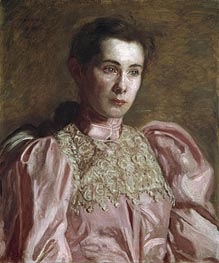
Miss Gertrude Murray 1895
Oil Painting
$1436
$1436
Canvas Print
$77.93
$77.93
SKU: EAT-7782
Thomas Eakins
Original Size: 61 x 51.4 cm
Dallas Museum of Art, Texas, USA
Thomas Eakins
Original Size: 61 x 51.4 cm
Dallas Museum of Art, Texas, USA

Music 1904
Oil Painting
$1178
$1178
Canvas Print
$64.31
$64.31
SKU: EAT-7783
Thomas Eakins
Original Size: 101 x 126.3 cm
Albright-Knox Art Gallery, Buffalo, USA
Thomas Eakins
Original Size: 101 x 126.3 cm
Albright-Knox Art Gallery, Buffalo, USA
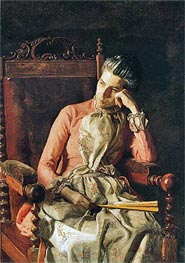
Miss Amelia Van Buren c.1891
Oil Painting
$1314
$1314
Canvas Print
$66.02
$66.02
SKU: EAT-7784
Thomas Eakins
Original Size: 114.3 x 81.3 cm
Phillips Collection, Washington, USA
Thomas Eakins
Original Size: 114.3 x 81.3 cm
Phillips Collection, Washington, USA
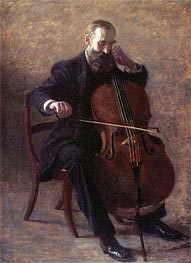
The Cello Player 1896
Oil Painting
$1330
$1330
SKU: EAT-7785
Thomas Eakins
Original Size: unknown
University of Pennsylvania, Philadelphia, USA
Thomas Eakins
Original Size: unknown
University of Pennsylvania, Philadelphia, USA

The Model c.1908
Oil Painting
$1029
$1029
Canvas Print
$95.87
$95.87
SKU: EAT-7786
Thomas Eakins
Original Size: 61 x 50.8 cm
Private Collection
Thomas Eakins
Original Size: 61 x 50.8 cm
Private Collection
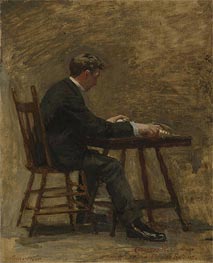
The Timer (Study For 'Between Rounds') c.1898
Oil Painting
$906
$906
Canvas Print
$72.22
$72.22
SKU: EAT-7787
Thomas Eakins
Original Size: 53.3 x 43.8 cm
Private Collection
Thomas Eakins
Original Size: 53.3 x 43.8 cm
Private Collection
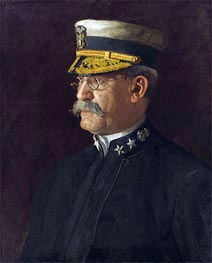
Rear Admiral Charles Dwight Sigsbee 1903
Oil Painting
$1119
$1119
Canvas Print
$64.69
$64.69
SKU: EAT-7788
Thomas Eakins
Original Size: 66 x 53.3 cm
Private Collection
Thomas Eakins
Original Size: 66 x 53.3 cm
Private Collection

Head and Shoulders of a Woman with Clasped Hands n.d.
Paper Art Print
$58.48
$58.48
SKU: EAT-7789
Thomas Eakins
Original Size: 13.2 x 15.6 cm
Fogg Art Museum at Harvard University, Massachusetts, USA
Thomas Eakins
Original Size: 13.2 x 15.6 cm
Fogg Art Museum at Harvard University, Massachusetts, USA
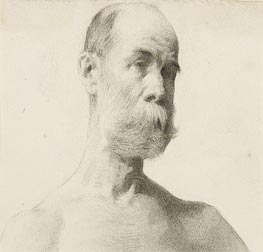
Head and Shoulders of a Bearded Man n.d.
Paper Art Print
$58.48
$58.48
SKU: EAT-7790
Thomas Eakins
Original Size: 13.1 x 15.5 cm
Fogg Art Museum at Harvard University, Massachusetts, USA
Thomas Eakins
Original Size: 13.1 x 15.5 cm
Fogg Art Museum at Harvard University, Massachusetts, USA
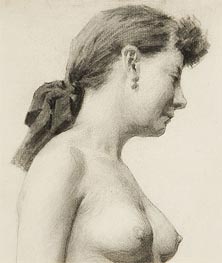
Head and Torso of a Woman with Ribbon in her Hair n.d.
Paper Art Print
$58.48
$58.48
SKU: EAT-7791
Thomas Eakins
Original Size: 18.7 x 16 cm
Fogg Art Museum at Harvard University, Massachusetts, USA
Thomas Eakins
Original Size: 18.7 x 16 cm
Fogg Art Museum at Harvard University, Massachusetts, USA
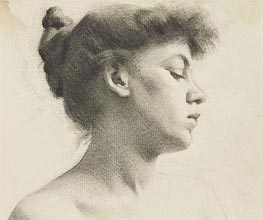
Head of a Woman with a Bun n.d.
Paper Art Print
$58.48
$58.48
SKU: EAT-7792
Thomas Eakins
Original Size: 13.1 x 15.5 cm
Fogg Art Museum at Harvard University, Massachusetts, USA
Thomas Eakins
Original Size: 13.1 x 15.5 cm
Fogg Art Museum at Harvard University, Massachusetts, USA

Major Manuel Waldteufel 1907
Oil Painting
$1145
$1145
Canvas Print
$95.87
$95.87
SKU: EAT-7996
Thomas Eakins
Original Size: 61 x 50.8 cm
Private Collection
Thomas Eakins
Original Size: 61 x 50.8 cm
Private Collection
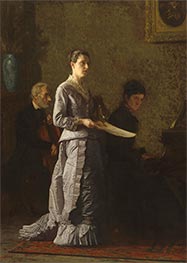
Singing a Pathetic Song 1881
Oil Painting
$1638
$1638
Canvas Print
$66.53
$66.53
SKU: EAT-17737
Thomas Eakins
Original Size: 114.3 x 81.8 cm
National Gallery of Art, Washington, USA
Thomas Eakins
Original Size: 114.3 x 81.8 cm
National Gallery of Art, Washington, USA

Portrait of a Woman Reading n.d.
Oil Painting
$1083
$1083
Canvas Print
$77.77
$77.77
SKU: EAT-18144
Thomas Eakins
Original Size: 77 x 64 cm
Dallas Museum of Art, Texas, USA
Thomas Eakins
Original Size: 77 x 64 cm
Dallas Museum of Art, Texas, USA